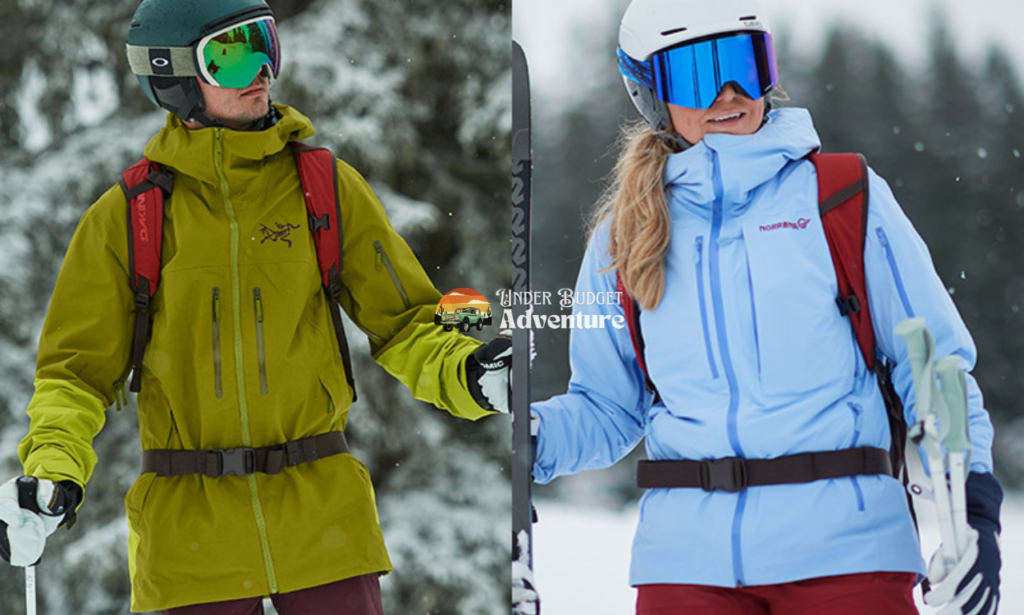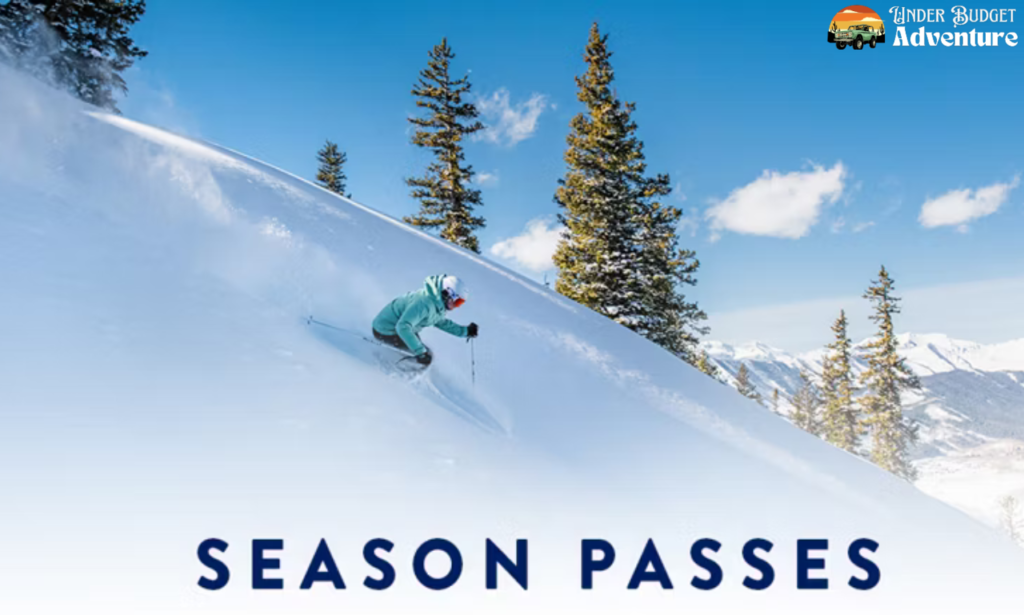Cost to Ski or Snowboard – You might have heard that skiing can be quite pricey. So, how much does it cost to hit the slopes for a day or an entire season? In short, a single day of skiing or snowboarding can range from $80 to $200 or more, depending on whether you need to rent equipment and clothing.
The cost of skiing can vary widely, depending on how much you’re willing to spend. Let’s break down all the expenses associated with a day on the mountain.
How Much Does It Cost to Ski for a Day
To spend a day skiing, you’ll need four essentials: clothing, skis, a lift ticket, and food or drinks. If you don’t own any gear or clothing and need to rent everything, expect to spend about $200 at an average ski resort. If you already have your own clothing, the cost drops to around $150. If you have your own ski equipment, the expense falls to about $100.
Bringing your own lunch can further reduce the cost to just the lift ticket, which is typically around $80. Remember, costs can vary based on location and rental prices, so it’s always a good idea to plan ahead and check for deals.
Here’s a breakdown of the costs for a day of skiing:
- Ski rental equipment and helmet: $50 + $12 = $62
- Daily lift ticket: $80
- Clothing rental: $50
- Food: $20
Total: $212 per day
Best Snow Ski equipment

For a day of skiing, you’ll need skis and ski boots, and it’s also wise to wear a helmet for safety. In the United States, renting a full set of skis, boots, and poles typically costs between $47 and $68. If you prefer to buy your own gear, expect to spend between $600 and $1300, with high-performance equipment costing more than standard beginner to intermediate gear.
A ski helmet is essential for safety. While some resorts include helmet rentals with their equipment package, others charge extra. On average, renting a ski helmet costs around $12 per day. Alternatively, you can purchase a good-quality ski helmet for about $75. Investing in your own gear might be more economical in the long run, especially if you ski frequently.
If you’re renting ski gear for multiple days, you’ll generally see a discount. You can save between 20% and 30% by opting for a multi-day rental.
Check out our article on rental costs for more details.
Best Ski Clothing

For a day on the slopes, you’ll need a winter coat, ski pants, base layers, a sweater, ski socks, gloves, and a pair of ski goggles. A decent set of beginner ski clothing can be found for around $200.
However, if you opt for high-end, high-performance gear, you could easily spend several thousand dollars. Investing in quality clothing can enhance your comfort and performance, but it’s important to choose gear that fits both your budget and skiing needs.
Here’s a breakdown of the costs for essential ski clothing and gear:
- Goggles: $25 – $100
- Ski jacket: $80 – $150
- Ski pants: $30 – $100
- Base layers: $30 – $80
- Ski socks: $20 – $40
- Ski sweater: $20 – $100
Total: $205 – $570
This range reflects options from basic to more premium gear, depending on your preferences and budget.
Most major ski resorts offer clothing rentals, and there are also online options available. Renting ski clothes typically costs between $30 and $100 per day. One popular online service for ski clothing rentals is Kitlender.com.
Lift Tickets / Season Pass

Daily lift tickets can be one of the priciest aspects of skiing. The cost varies significantly depending on the resort; smaller local resorts generally offer tickets between $50 and $80 per day, with some even as low as $20. In contrast, a lift ticket at a large luxury resort like Vail can exceed $200.
Opting for multi-day lift tickets can be more economical than buying individual tickets each day. A 3 to 5-day pass can save you 25% to 40% compared to the daily rate. Additionally, purchasing tickets in advance often provides substantial savings compared to buying them at the resort.
If the weather isn’t ideal, you might not be able to exchange your pre-purchased lift ticket for another day. For example, during a visit to Blue Mountain in Ontario, we encountered a heavy downpour while the lifts continued to operate.
Despite the weather conditions and a mountain evacuation due to a thunderstorm, we couldn’t switch our tickets to another day. Generally, resorts do not offer refunds for unused lift tickets.
Season passes are an excellent way to save money if you plan to ski at a particular mountain more than a few times during the winter. They can range from $100 to $1500, depending on the resort’s size and offerings. If you’re a frequent skier at a single location, a season pass can provide significant savings over purchasing individual day passes.
Another option for reducing lift ticket costs is to invest in a multi-resort pass, such as the Epic Pass, Ikon Pass, Mountain Collective, or Indy Pass. These passes offer access to multiple ski resorts worldwide for a single fee, which typically ranges from $300 to $1000. Purchasing these passes in the spring or summer often comes with substantial discounts for the upcoming winter season.
For those who don’t need a full season pass, smaller day-count passes like the Epic Day Pass are available. These passes offer 1 to 4 days of skiing at a reduced rate compared to a full season pass.
Season and multi-resort pass holders also enjoy the convenience of skipping the ticket window and heading straight to the lifts upon arrival. This can save valuable time, especially during busy periods.
Additionally, if you’ve served in the armed forces, some resorts offer special discounts on lift tickets as a token of appreciation for your service.
Food and Drink

Skiing is a physically demanding activity, and after a full day on the slopes, you’ll need to refuel. Unfortunately, many ski resorts take advantage of this need with inflated food prices.
While a few resorts do offer reasonably priced options in their cafeterias, most will charge between $15 and $20 for a standard lunch. Dining at a mountain bar or sit-down restaurant will cost even more.
To save money, consider packing your own lunch. You can store it in your car, carry it in a backpack, or use a locker at the base of the mountain. This way, you can enjoy a more affordable meal without compromising your skiing experience.
Another useful tip is to bring instant noodles and take advantage of free hot water available at many ski resorts. This way, you can enjoy a warm lunch without spending extra money.
Parking

Currently, most ski resorts do not charge for daytime parking. However, this is beginning to change at larger resorts experiencing overcrowding or parking shortages.
In the future, charging for parking may become more common as resorts seek additional revenue. To avoid any surprises, it’s a good idea to check with your destination resort beforehand to see if there is a parking fee.
Conclusion
Skiing or snowboarding costs can vary widely. You’ll need to budget for gear, lift tickets, and sometimes lessons. On average, renting equipment and buying a lift ticket can cost around $100 to $200 per day. Costs can be higher if you buy your own gear or choose premium locations. Overall, planning ahead and looking for deals can help keep expenses in check.
Frequently Asked Questions
How Much Does a Set of Skis Cost?
Currently, the most affordable adult skis, including bindings, start at around $400. At the high end, a complete set of premium skis can cost up to $1500, with bindings adding another $500. Overall, prices for skis typically range from $400 to $2000, depending on the quality and features.
Is Skiing an Expensive Hobby?
Yes, skiing is undeniably expensive, and there’s no easy way to avoid the costs.
How Much is a Decent Ski Setup?
A good set of intermediate ski gear will cost approximately $1790.
Is skiing more expensive than snowboarding?
Both skiing and snowboarding generally cost about the same. The main difference lies in the gear: skiing requires skis, boots, and poles, while snowboarding needs a snowboard, bindings, and boots. When you add up the costs, they are quite comparable.

